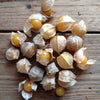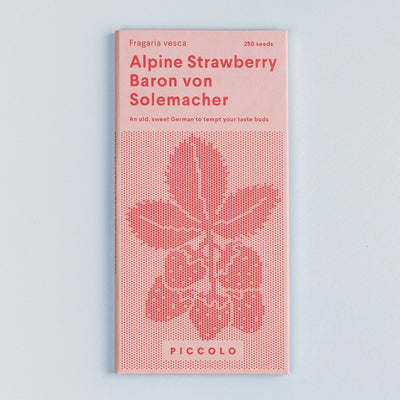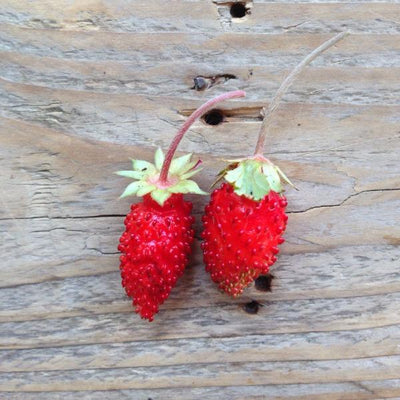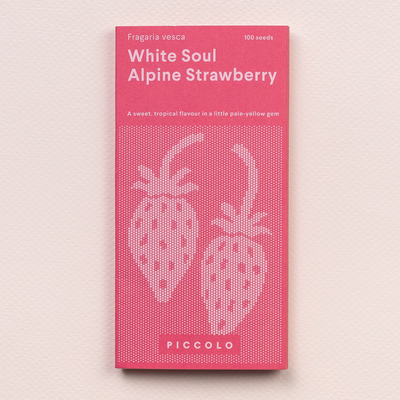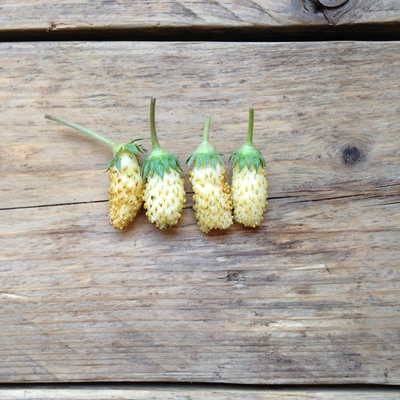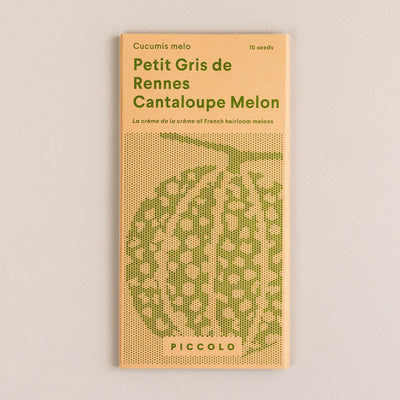Golden Berry Cape Gooseberry



Regular price €3.00
Cape Gooseberry is a nightshade plant native to Brazil that is actually closer to a tomato than a berry. Its delicious yellow-orange fruit, wrapped inside a peculiar paper - or lantern-like cape, can be considered a sweet version of the cherry tomato, with a sour note that reminds one of a cranberry. Its complex flavour was enough to capture the interest of an English pastry chef in 18th century England, who grew the plant after it was imported from the New World. Cape Gooseberry plants are very easy to grow in pots and require so little maintenance that they will easily re-seed in sunny, frost-free spots in your container garden!
Details
Latin name
Physalis peruviana
Name
Goldenberry
Variety
Cape Gooseberry
Quantity
125 seeds
Plant size
Height 70 cm
Width 45 cm
Container size
Height 30 cm
Width 30 cm
Companion plant
Tomatoes, basils, okra, chives, calendula, mints.
How to grow
Sowing
Indoor Feb-Mar
Outdoor Apr-May
Timing
Germination 7-15 days
Harvesting 90-120 days
Spacing
When sowing 3-5 cm; Depth 0,5 cm
When transplanting 30-40 cm
Growing
Sunligth Full sun.
Soil Well-drained, moist and fertile soil.
Watering Regular, abundant watering.
Feeding No fertilizer or compost addition is necessary.
Caring
Expert tip The Cape Gooseberry seems to thrive on neglect; even light fertilizer will depress flowering. Grow it in a frost-free spot and provide plenty of water, except when the fruits are ripening.
Supporting
Pollinators
Pollination is enhanced by a gentle shaking of the flowering stems.
Pests
It is said it distracts caterpillars from other cultivation.
How to eat
Harvesting
Pick the fruits when they fall to the ground or when their little covers turn papery, enabling you to see the yellow-orange fruits inside. The unripe fruits are said to be poisonous, so choose carefully!
Eating
Medicinal properties Due to their high antioxidant value and low sugar content, golden berries are considered very nutritious and are the latest trend on the ‘super food’ list.
How to eat The ripe fruits can be eaten raw on their own or in salads. They also add a sweet-sour note to cooked dishes – and they really sing in pies, desserts and jams. A classic serving suggestion is to dip the berries in melted chocolate or another favourite topping.


